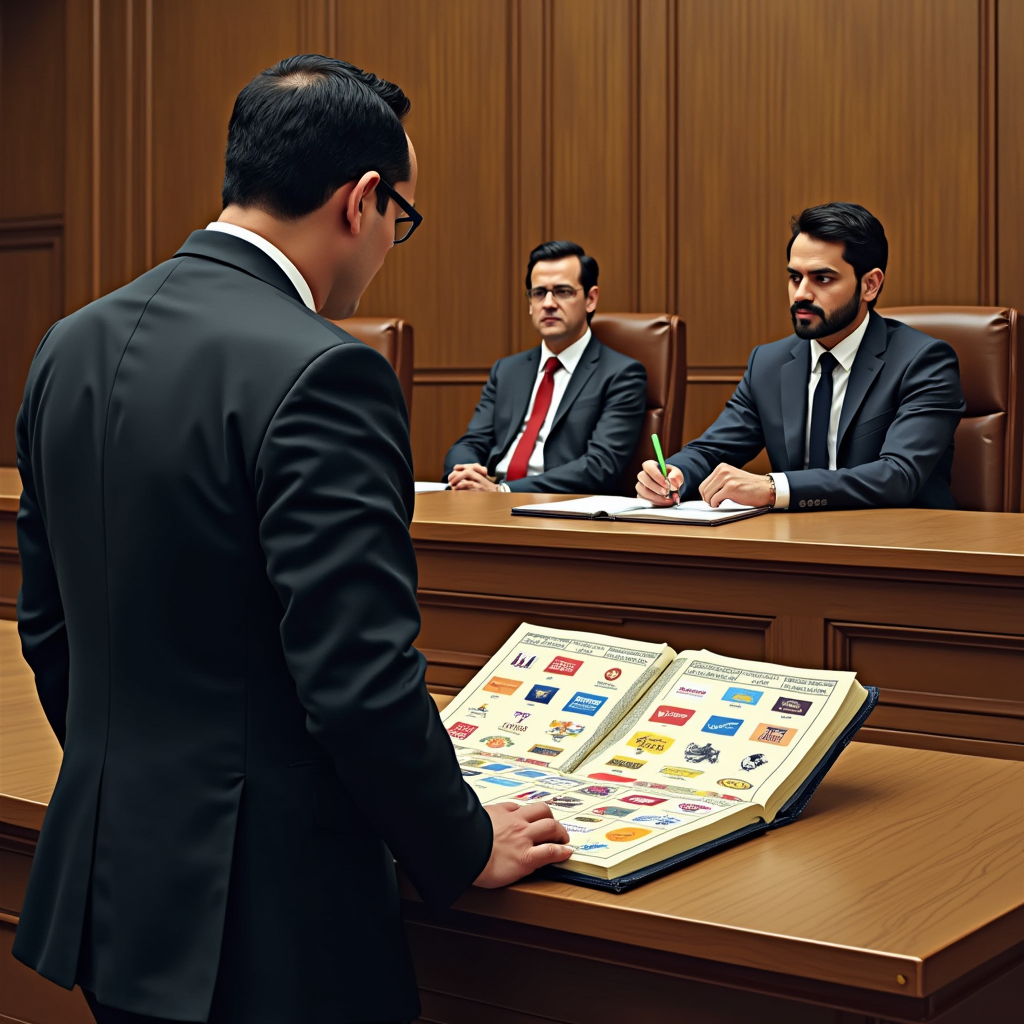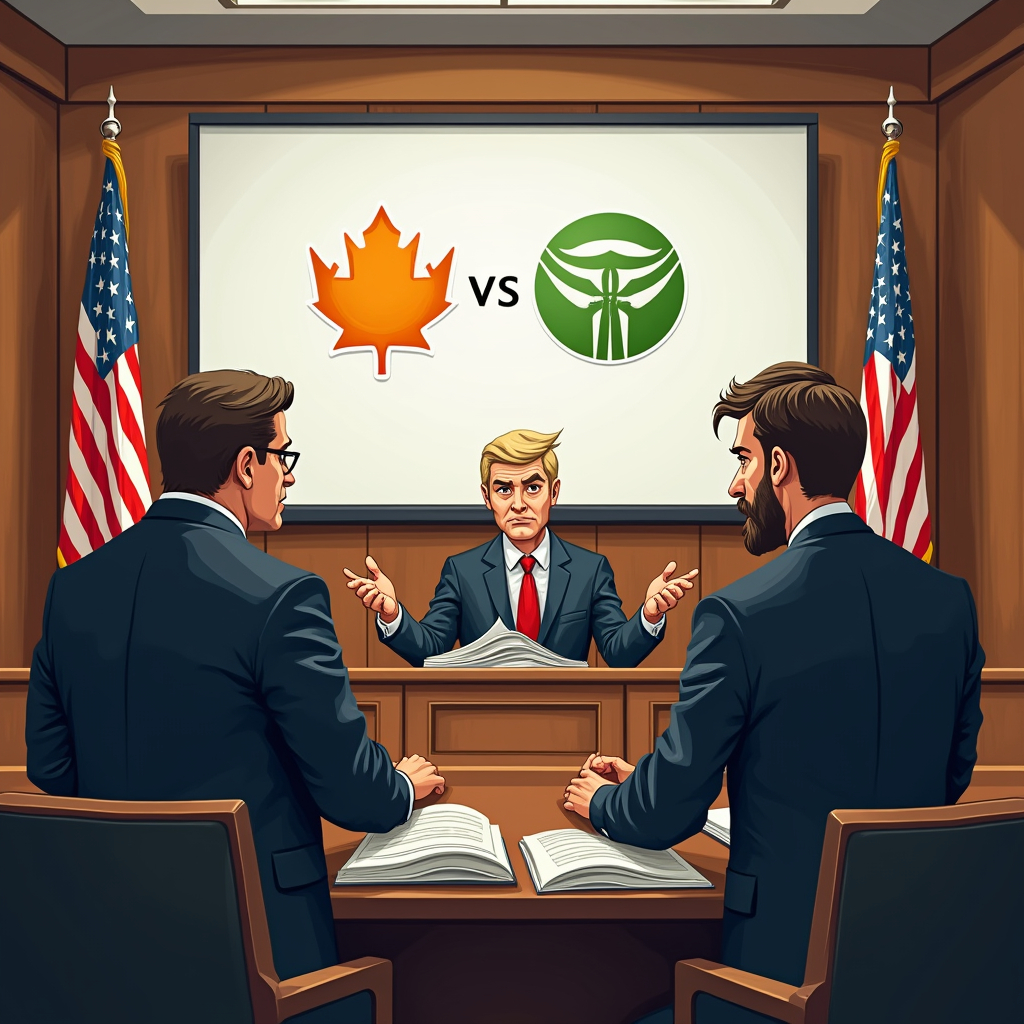This article is written by Shreya Patel. This article explains the trade mark opposition process in India along with Section 21 of Trade Marks Act. This article also discusses the different stages of trade mark opposition, along with landmark case laws.
Table of Contents
Introduction
Trademarking your brand is a crucial milestone for a successful business. One of the vital steps in the trade mark registration is trade mark opposition. A company has applied for a trade mark registration to protect its brand. But what happens if any third party opposes your trade mark application?
It is significant to understand the trade mark opposition process for all parties, whether you are an owner of the brand who is filing for their own trade mark or a third party concerned with any application. Trade mark opposition is a method used by third parties who are concerned with a trade mark application. Any person can oppose a trade mark registration if they have valid reasons.
In this article, we will discuss the procedure of trade mark opposition, the grounds on which a trade mark application can be opposed, all the important forms and fees which are required to be filed at different stages, along with landmark judgements that show the significance of filing a trade mark under the prescribed time limits, among other aspects.
Importance of trade mark opposition
The Trade Marks Act, 1999 (hereinafter referred to as ‘the Act’) provides the provision for trade mark opposition in India. Section 21 of the Act explains the trade mark opposition and its related information. The Trade Mark Rules, 2017 (hereinafter referred to as ‘the Rules’) also consists of rules which are followed at the time of trade mark opposition. The Act and Rules together provide all information which is required by both the applicant and the third parties opposing a trade mark application on what all steps they can take along with timelines that they have to follow.
Let’s understand the importance of trade mark opposition before we move forward with the process of trade mark opposition.
Trade mark opposition is very important as it protects the consumers in the society by preventing a trade mark from being registered, which can create confusion in the minds of the consumers between 2 or more brands. Trade mark opposition also prevents similar trade mark registrations, which can lead to unfair advantages from a registered trade mark.
The process of opposing a trade mark comes earlier and before the trade mark is registered in finality, which helps in resolving the conflicts in the earlier stages and minimises the risks of legal disputes after the registration has been done of a trade mark. Trade mark opposition also ensures that only the marks which deserve protection are registered and facilitates public participation as trade mark registration can be opposed by any party. The parties opposing the trade mark did not need to have any type of personal or commercial interest in the trade mark which is being registered.
Trade mark opposition
The trade mark application filling and its examination is only one of the first stages in the entire trade mark registration process. After the trade mark application is examined by the Registrar and accepted from this end, the application for the registration is advertised in the Trade Mark Journal. The application is now open to the public to be opposed if any third party feels that the said mark is either similar to an existing mark in the market or infringes the rights of other trade marks. The aim of opposing a trade mark application is to protect the party who feels that registering such a mark can lead to confusion in the mind of consumers as both the marks are either deliberately similar or identical in nature.
There are many reasons for opposing a trade mark registration in India. Let’s take a look at these reasons!
What are the grounds for trade mark opposition
There are various grounds (Section 9 and 11) on which a trade mark registration can be opposed, like –
- A trade mark registration can be opposed if the mark is very similar to a registered trade mark.
- A mark which is similar or identical and is already published in the Trade Mark Journal can also be opposed.
- A trade mark registration can be opposed if the mark does not have distinctiveness.
- A mark can also be opposed if the mark is descriptive in nature, which means the symbol or the word mark itself shows the key characteristics of the goods or services along with their quality.
- A trade mark can also be opposed if it is contrary to any laws in India or is prevented by any laws.
- If the trade mark seems to be hurting any religious sentiment of any segment in India, then also such parties can file for trade mark registration opposition.
- When a very similar trade mark is being registered, which is not in good faith, it can also be opposed by the parties who feel that their rights are being infringed.

Clause-wise explanation of Section 21 of Trade Marks Act
Section 21 explains all about the trade mark opposition process. Trade mark opposition is one of the most significant stages in the trade mark registration process in India. The stage of trade mark opposition comes after the trade mark application is advertised in the Trade Marks Journal. This Section talks about the entire opposition process along with important timelines that are to be followed by all the parties involved in the opposition.
Let’s examine all the sub-sections individually and explore the intended implications.
Section 21(1) of Trade Marks Act, 1999
This sub-section states that any person can oppose a trade mark registration within four months from the date when such trade mark application is advertised or re-advertised in the Trade Mark Journal. In the case of Prem N. Mayor And Ors. vs. Registrar Of Trade Marks And Ors. (1968), the Calcutta High Court set the principles in relation to the opposition process. It was argued by the counsel on behalf of the Registrar that the appellant cannot object to the trade mark registration as he is not the owner of the registered trade mark.
It was pointed out by the appellant that Section 21 of the Trade and Merchandise Marks Act 1958 specifically mentioned that ‘any person can object to the trade mark registration.’ This case explained that ‘any person’ means not only a prior registered trade mark owner, but will also include any member of society who is likely to get confused or a client who is related to a party involved with a similar trade mark. There are no fixed criteria as to who can oppose an application of a trade mark. The Trade Mark Registrar will only consider the merits of the case and not the party that has filed the trade mark opposition.
This opposition has to be in writing and as per the manner prescribed by the Registry, along with a payment of certain fees as specified by the Trade Mark Office. This sub-section provides the most important element of trade mark opposition, which is the time limit to file such opposition. Like every other step in trade mark registration, if any third party wants to oppose the registration of a trade mark they have to pay a fee for the same and the notice must be in writing.
Section 21(2) of Trade Marks Act, 1999
This sub-section states that a copy of the notice of opposition is to be sent by the Registrar to the applicant of the trade mark which is being opposed by a third party. The applicant shall reply to the notice of opposition within 2 months from receiving it. The applicant has to send the counter-statement on the grounds on which his application relies. If the applicant fails to send a reply to the notice of opposition within the prescribed time, then such an application for the registration is considered abandoned by the applicant.
Section 21(3) of Trade Marks Act, 1999
This sub-section states that when a reply to a notice of opposition is sent, the Registrar will then send the same to the party opposing the trade mark registration.
Section 21(4) of Trade Marks Act, 1999
The evidence is supposed to be included at the time of sending a notice of opposition and also at the time of replying to such notice. This sub-section states that all the evidence that is provided by the opposing party and the applicants is to be filed in the manner prescribed by the Registrar within the time period given by him to both parties. The opportunity to be heard shall also be provided by the Registrar to both the parties if necessary.
Section 21(5) of Trade Marks Act, 1999
This sub-section states the Registrar, after listening to both sides and also after reviewing the evidence submitted by them, decides whether the registration of the trade mark should take place or not. The Registrar also decides, if necessary, whether some limitations or special conditions should be there or not. The Registrar can also take into consideration the other reasons to reject trade mark registration, even if the same is not mentioned by the opponent.
Section 21(6) of Trade Marks Act, 1999
When a party which is opposing the trade mark application is not doing business or living in India, this sub-section states that such a party has to be asked by the Registrar to provide a security deposit in order to cover all the legal costs. In the case where such security deposit is not paid, the Registrar can treat the application or the opposition as abandoned.
Section 21(7) of Trade Marks Act, 1999
The sub-section provides the permission to make any amendment or correction in case of error in the counter-statement or the notice of opposition, if the Registrar permits the same.
Let’s now explore the trade mark opposition process in detail.

Breakdown of trade mark opposition
Trade mark opposition notice
A trade mark opposition can be filed by any person within four months from the date on which such registration application has been accepted and advertised in the Trade Mark Journal in India. The registration application is opposed when a party feels that any identical or distinctively similar trade mark already exists in the market or is in the process of registration.
Notice of opposition
The notice of opposition is to be given by filing the Form TM-O the form can be filed either physically or online. The fees for the TM-O form is:
| Amount | Type of filing |
| ₹ 3000 | Physical |
| ₹ 27000 | Online |
Rule 43 of the Rules states all the key requirements that are to be included in the TM-O form. The form shall include:
- The details of the application which is being opposed
- The number of the application
- The goods or services which are being opposed
- Applicant’s name
- All the details of the mark or the right which is being infringed with the current trade mark registration.
- If the registration of a trade mark is being opposed on the basis of an earlier existing trade mark then indication of use and the effect.
- The filing date and the application number of the earlier trade mark
- If the opposition is based on the well-known trade mark, then the details of that well-known mark.
- The details of the opposing party, like the name and address of the owner, proof of ownership of trade mark, address of the principal place of business.
- The opposition grounds on which the opposition is filed.
The notice of opposition is to be signed by the authorised agent. A single opposition notice can also be filed for different classes of trade mark and the fees for the same can be paid individually for each class as per Rule 42. After the notice of opposition is submitted to the Registrar Office the same goes through a formality check, after which a copy of the notice of opposition is sent to the applicant.
Notice of counter-statement
The applicant, on receiving a notice of opposition, has to file a reply, which is referred to as a counter-statement within two months from the date on which the same is received, as stated in Rule 44 of the Rules. The verification of the counter-statement has to be done in accordance with Rule 43. The reply to a notice of opposition by submitting a counter statement can be extended by one month.
Evidence under trade mark opposition
Evidence in support of opposition
Rule 45 of the Rules talks about the evidence which is supposed to be filed in support of the opposition. The opponent has to file the evidence using an affidavit within two months of the service of the counter-statement. The opponent can attach some evidence to back his notice of opposition by submitting the same to the Registrar along with writing to the applicant as well. These evidence can include sale invoices, advertising materials, packaging of the products, etc. which show the use of the trade mark. The opponent can also state in writing that he does not adduce evidence in support of the opposition but only relies on the facts which are included in the notice of opposition.
The opponent can also send copies of the evidence filed by him to the application and inform the Registrar of the same. If no evidence is submitted by the opponent, then the opposition can be considered abandoned.
Evidence in support of application
Rule 46 talks about the evidence in support of the application. After the evidence has been sent in support of the opposition under Rule 45, the applicant has to send the evidence in support of the application. The evidence can include documents that show the distinctiveness between the marks, proof of prior use if applicable, etc., which show how the trade mark is not opposing the registered trade mark. In this stage, the applicant has the option to waive this right and choose to submit the counter-statement alone.
Evidence in reply by opponent

After the evidence is submitted in support of the application, the opponent is again given a chance to submit the evidence in support of the opponent as per Rule 47. This rule is added in order to get a conclusion on the opposition procedure for ending the cycle of evidence submission by the parties again and again.
The Rule 48 also states that no evidence shall further be submitted, but if the Registrar thinks fit it can be allowed at the time of hearing.
Hearing of the case
After the evidence is submitted by both the applicant and the opposing party the hearing of the case takes place. The trade mark hearing is set by the Trade Mark Registrar and informed to both parties (Rule 50). If any of the parties are not able to attend the hearing due to any reasons they can submit the Form TM-M to adjourn the hearing at least three days before the date on which the hearing is scheduled to take place.
The hearing can be adjourned maximum for at least two times, which shall not be more than thirty days. The Registrar, after giving the opportunity to both parties to keep their point, takes the decision on whether the trade mark shall be registered or not.
Timeline of opposition process
| Stage | Timeline |
| Filing of the notice of opposition | Within 4 months from the date on which the trade mark application is accepted and advertised in the Trade Mark JournalFor example: the trade mark application was advertised on 5-10-2024 then the time period of file opposition will be counted 4 months from 5-10-2024 – 5-02-2025. |
| Filing the notice of counter-statement | Counter-statement is to be filed within 2 months from the date on which the actual notice of opposition is received. |
| Submission of evidence | Within two months of serving notice of opposition and counter statement, where one-month extension is provided |
| Hearing | As per the Registrar, the same can be adjourned for two times but not for more than thirty days. |
Landmark case laws on Section 21 of Trade Marks Act, 1999
This case is related to the interpretation of Section 21(2) of the Act and its application to notice of opposition receipt in the proceedings of trade mark.
Ramya S. Moorthy vs. Registrar Of Trade Marks (2023)
Facts of the case
This crucial judgement was delivered by the Madras High Court in August 2023. Ramya S. Moorthy had filed 2 applications for registration of trade marks, both under different trade mark classes. The applications were accepted by the Examiner, and the same were advertised in the Trade Mark Journal. Nirma Ltd. filed an opposition in the period of four months provided for opposing any trade mark application against these 2 applications.
The main dispute here in this case was in relation to notice of opposition’s delivery to the petitioner. The notice was electronically sent to the petitioner in January by the Trade Marks Registry. The petitioner stated that she did not receive any such notice. The petitioner was not able to file any counterstatement to the notice of opposition due to this. The time period to file such a counterstatement is two months, as mentioned in Section 21(2) of the Act. This led to impugned orders against the petitioner/applicant.
Issues
The main issue of the case is the interpretation of Section 21(2) of the Act, and whether the two-month time limit to file the counterstatements is to be counted from the date of actual receipt of opposition notice or from the date of dispatch of such opposition notice.
Analysis and judgement
The main question in this case was when to start the count of the 2-month time period given to file a counterstatement. It is clearly stated in Section 21(2) that the counter statement is to be filed by the applicant within two months from the receipt of the notice of opposition by the applicant. Rule 18(2) talks about the service by the email and deems the service to occur at the time of sending the email. It was pointed out that if the interpretation is done in a literal sense, then a conflict might arise in the language within Section 21(2) and the applicant’s rights can be in danger.
It was concluded by the court that the time period for counter statement filing will start from the date on which the actual email is received. The documents stating the successful transmission do not act as evidence of receipt by the petitioner.

The High Court of Madras quashed the orders given previously and the applicants for both the trade marks were advised to be remanded and reinstated by the Registrar to reconsider the same. The whole matter was to be re-evaluated by the Register and an opportunity to be heard was to be given to both parties.
The case provides a clarification on the time period during which the counter statement should be filed by the applicants when they have received a notice of opposition and from that date, such a two-month period will be started. This interpretation helps protect the rights of the trade mark applicants along with aligning the natural justice principle.
Parvesh Kamboj vs. The Controller General Of Patents, Designs and trade marks (2022)
Facts of the case
In the case of Parvesh Kamboj vs. The Controller General Of Patents, Designs and Trademarks (2022), four writ petitions were merged together by the High Court of Delhi. The writ petitions were filed under Article 226 (power of the High Courts to issue certain writs) and Article 227 (power of superintendence over all the courts by the High Court) of the Indian Constitution. The petitioners were not allowed to exercise their right under Section 21 of the Act, which is to file opposition against the trade marks which they feel infringe their rights.
The petitioners wanted to file for opposition of the trade mark using the extension of limitation which was granted in 2020 by the Supreme Court due to COVID-19. However, the same was not allowed. The petitioners believed that the Controller General of Patents, Designs and Trade Marks (CGPDTM) acted in a discriminatory and arbitrary way. The reason for not filing the opposition was that the oppositions were proposed to be filed beyond the period of limitation and the trade marks which the petitioners wanted to oppose were already granted registration and their certificate of registration was also given to them.
Aggrieved by such a decision of CGPDTM, the petitioners moved to the High Court of Delhi by filing the captioned writ petitions.
Issues of the case
The main issues of the case are:
- Whether granting the registration along with issuing the certificate despite CGPDTM knowing that the intention of the petitioners to oppose the same beyond the limitation period was arbitrary in nature?
- Whether the petitioners can file an opposition under Section 21 of the Act after the registration process has been completed and the certificate of registration is issued?
Analysis and judgement
It was argued by the petitioners that the Trade Mark Office was behaving arbitrarily by choosing to apply the order of the Supreme Court only to some opponents. The petitioners were not able to file the opposition during the four month time period given despite the extension given by the Supreme Court. The Registry did not consider the oppositions of the petitioners and issued the certificates to the proprietors. The court was later informed that during the time over four lakh registrations were granted, which raised concerns.
The officers of CGPDTM later informed the court that many oppositions were filed and accepted at the time of pandemic. The Delhi High Court voiced disappointment as they were not informed about the same earlier. It appeared to be a deliberate move which jeopardised the applicant’s rights.
The court held that the actions of the CGPDTM were unacceptable. The court allowed the petitioner to file the oppositions either offline or online, while the registration which had been granted by the Registry, was suspended by the court till the entire procedure gets over. A fine was imposed on the CGPDTM officials of ₹ 100,000 each and to deposit the same in a relief fund for the pandemic.

With the above case, we can understand how the applicants have the right to oppose and trade mark if they feel it infringes their rights. But the parties interested in filing for the opposition have to ensure that the notice of opposition is filed within the period of four months from the date on which it was accepted and advertised in the Trade Mark Journal.
Conclusion
After reading the entire article we can understand how important the entire procedure of trade mark opposition is. A trade mark opposition is filed when a third party feels that a similar or identical mark is already registered or infringes the rights of the mark which is currently in the registration process. A trade mark registration is only completed when the Registrar approves the same. If the Registrar favours the opposing party, then the trade mark registration might also get denied. It is very vital to follow the rules prescribed along with the timeline for the opposition procedure to ensure that the trade mark registration does not get abandoned.
Frequently Asked Questions (FAQs)
Who can file a trade mark opposition in India?
As per Section 21 of the Act, any person can file a trade mark opposition in India. The person can be a competitor working in the same field, consumers, or any other third party. In order to oppose the trade mark opposition the person does not need to have any personal or commercial interest in the trade mark.
What is the next step after the notice of opposition is sent to the applicant?
After the third party sends the notice of opposition, the applicant has to file a reply to the opposition application through a counter statement within two months.
What happens if the applicant does not reply to the notice of opposition?
If the trade mark applicant fails to reply to the notice of opposition within the prescribed time (2 months) then the opposition will be considered abandoned by the Registry.
Where should a third party file the opposition for a trade mark?
The trade mark opposition is to be filed at the Trade Mark Registry, where the application for trade mark was filed. It is vital to ensure that the opposition is filed in the correct jurisdiction.
How to resolve a trade mark opposition?
In order to resolve a trade mark opposition in India, the applicant can submit the counter statement along with all the evidence and documents, followed by a hearing. The final decision will be taken by the Registrar on whether to dismiss such marks or to register it based on the case prepared.
References
- https://www.scconline.com/blog/post/2023/08/25/time-limit-file-counter-statement-notice-of-opposition-run-from-date-e-mail-madras-hc/
- https://www.lexology.com/library/detail.aspx?g=96d3d58f-c83c-4ede-9bb8-edf6e029df52
- https://www.livelaw.in/high-court/madras-high-court/madras-high-court-trade-mark-act-time-limit-counter-statement-notice-of-opposition-from-date-of-receipt-of-email-238460
- https://blog.ipleaders.in/trademark-prosecution-opposition-india/
Students of Lawsikho courses regularly produce writing assignments and work on practical exercises as a part of their coursework and develop themselves in real-life practical skills.
LawSikho has created a telegram group for exchanging legal knowledge, referrals, and various opportunities. You can click on this link and join:
Follow us on Instagram and subscribe to our YouTube channel for more amazing legal content.
 Serato DJ Crack 2025Serato DJ PRO Crack
Serato DJ Crack 2025Serato DJ PRO Crack









 Allow notifications
Allow notifications



